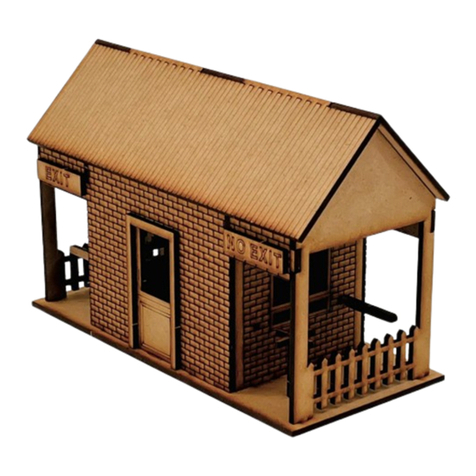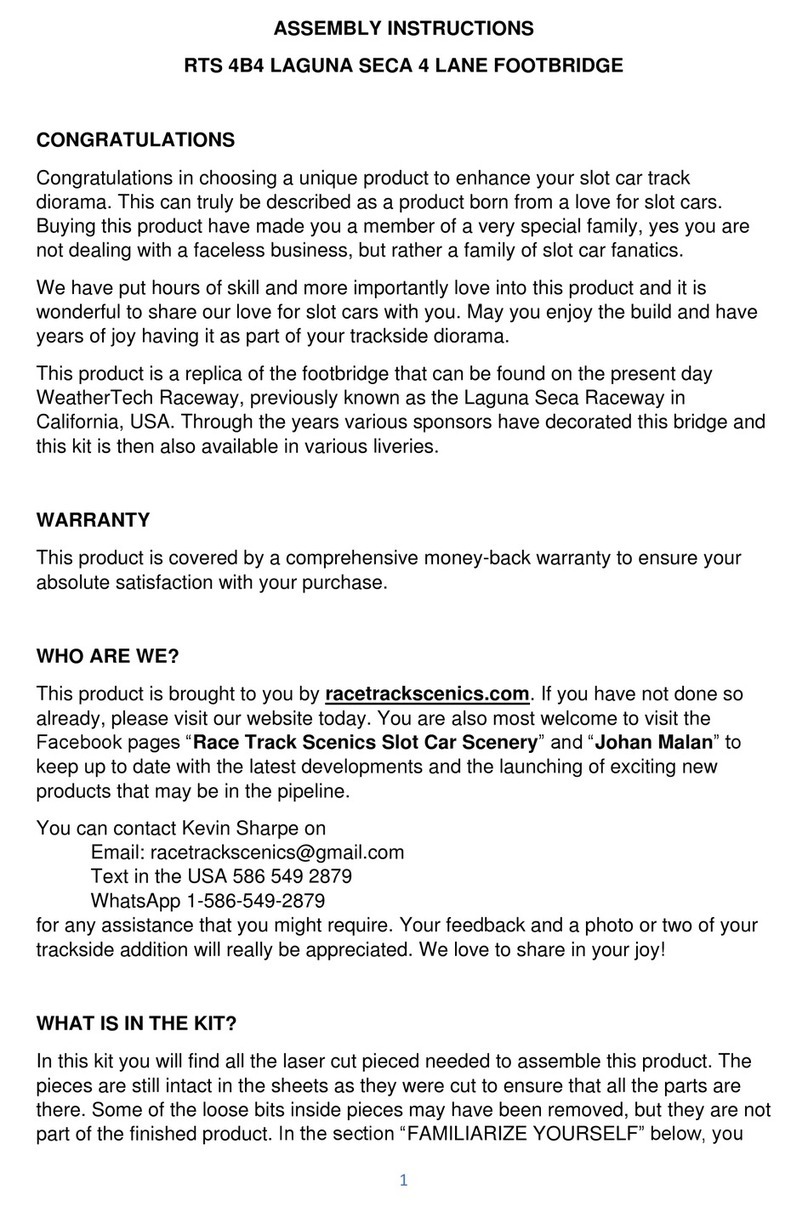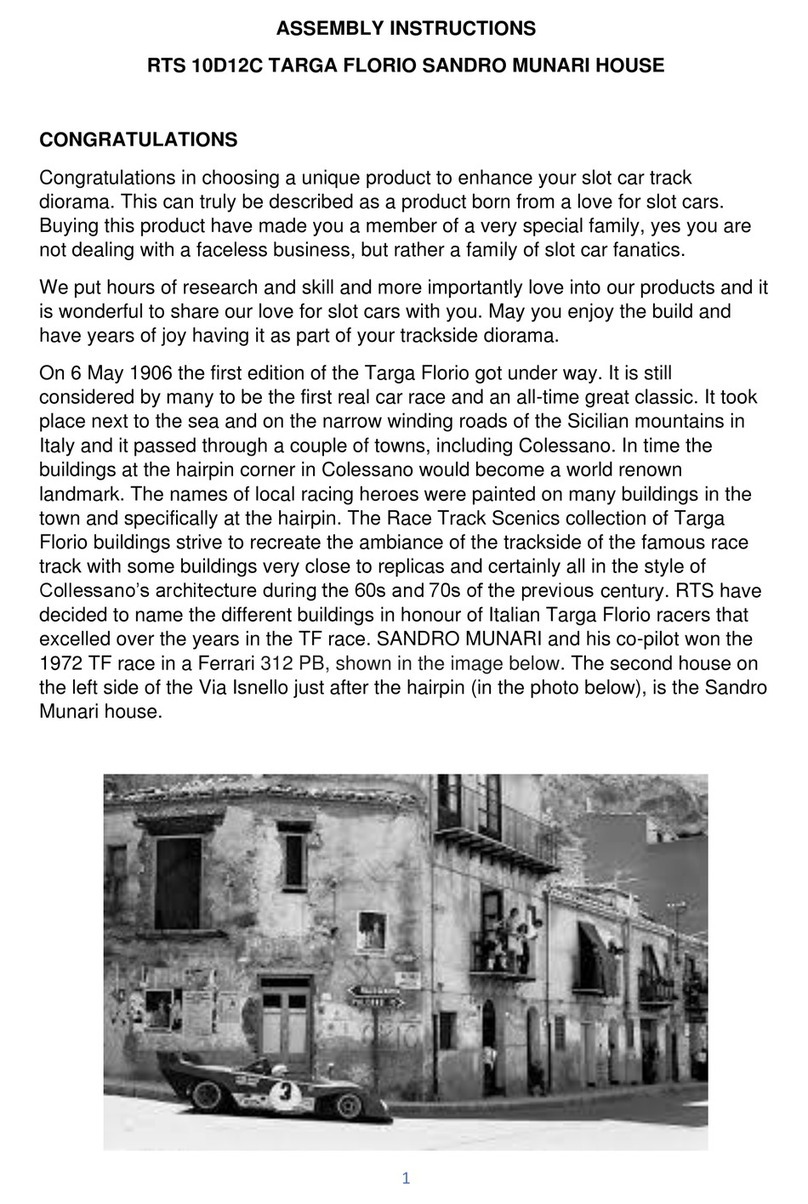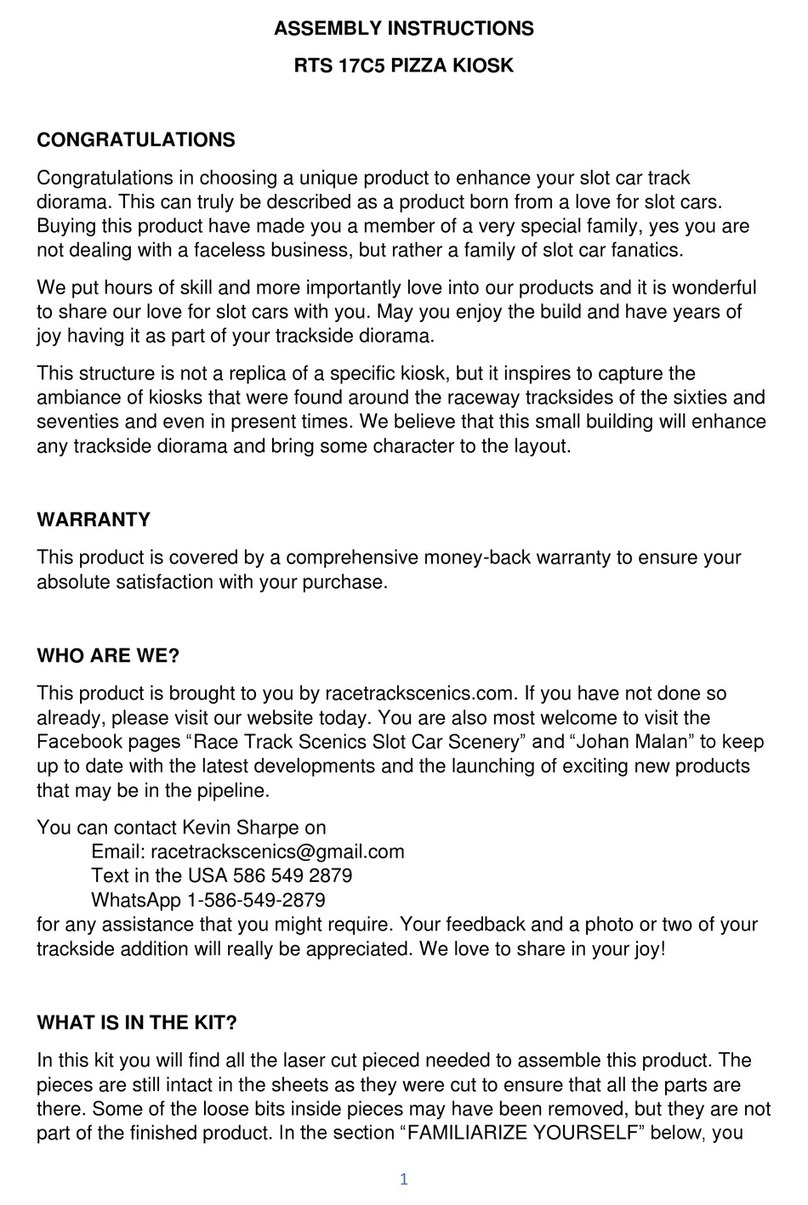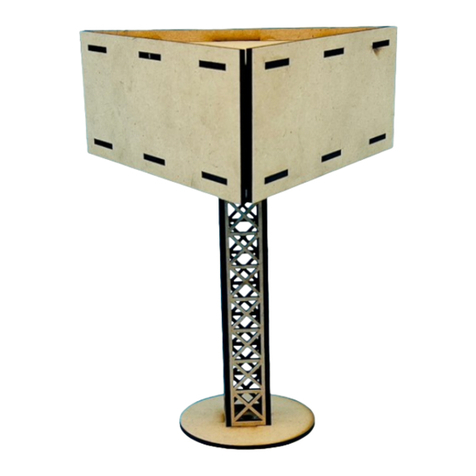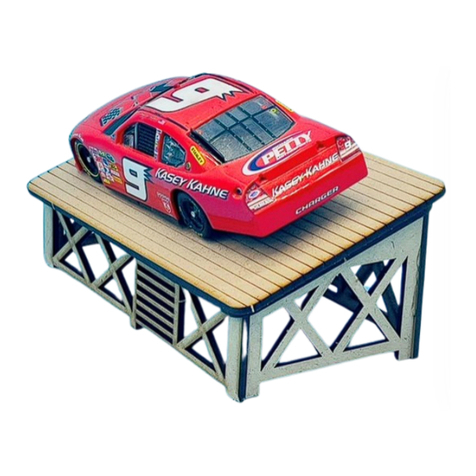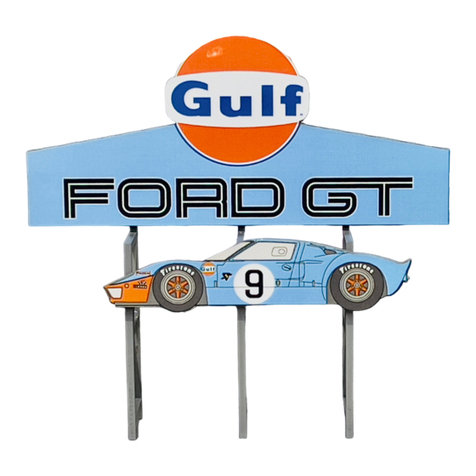You will only need a small amount of glue and remember to look for the surfaces that
will be in contact in the end and do not only apply glue to the lugs and sleeves. The
latter restrict movement in one plane, but the glue fix it in the perpendicular plane.
Using a toothpick is a handy way to apply glue and an earbud can be used to dab
away any excess of glue (especially if you use wood glue).
If parts must be at a right angle, you can use any object to assist you in obtaining a
square finished product in the end.
PREPARING THE CUT PIECES
Firstly, remove all the laser cut parts from the sheets. The sheets can be discarded.
Clean the edges of the parts if there are any tiny bits where the parts were fixed to
the sheets. This can be done with your knife or even your thumb nail.
We recommend that you start by sanding your finished product with a very light
sandpaper to ensure a smooth finish for the end product.
WORD OF ADVICE
We would strongly advise you to do a quick dry assembly before you start gluing the
laser cut parts together. Lay out all the parts on your work surface and make sure
that the parts are not upside down or mirrored. In most instances it will make no
difference, but in others it may be crucial to ensure a perfect product in the end.
Our laser cut parts are specifically cut to very fine tolerances to ensure a snug fit and
therefore it is wise to check all fits before gluing parts together. You may need to trim
a lug here and there to make assembly easier.
PAINTING YOUR PRODUCT
We would strongly advise you to finish the product with paint or wood stain to make
them as appealing as possible. The parts should be primed (2 coats) and painted
before final assembly. Spray paint can also be used to get a very smooth finish (the
finished product in the photo above has been spray painted). Oil or water-based
paint can be used and specialised paints like chalk paint can be used to give unique
finishes.
Generally, it is highly advisable to paint/spray before gluing. You may not be able to
get to the inside of the structure after it is glued together. Covering all the parts that
must not be painted or sprayed with the same colour can be a tedious process. Pre-
painting will avoid this process.
Please ensure that no paint clog a slot where a lug must fit in later. The tolerances
are often so tight that too thick a layer of paint may cause problems. It is our
experiences that a small foam roller instead of a brush, will produce a better finish
and far less clogging of sleeves.





